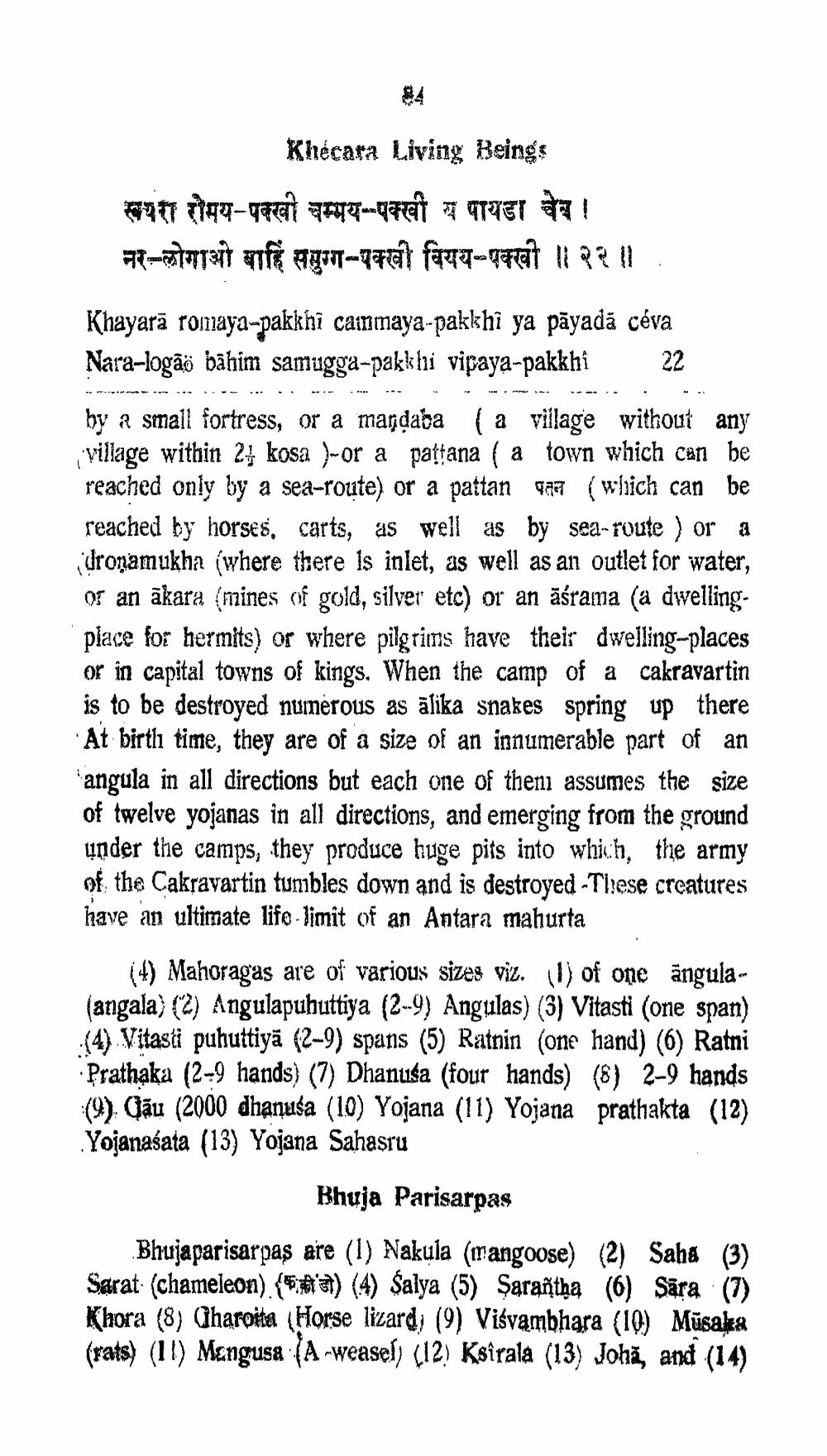________________
Khécara Living Beings #947 1199-99ent 977-pet 97767 IT! 72-benarrant of agro-rat fe49-grat li 2 11
Khayarā romaya-pakkhi canmaya-pakkhî ya pāyadā ceva Nara-logāö bāhim samugga-pakklıi vipaya-pakkhi 22
by a small fortress, or a maņdaba (a village without any village within 21 kosa l-or a pattana ( a town which can be reached only by a sea-route) or a pattan 977 (which can be reached by horses, carts, as well as by sea-route ) or a dronamukha (where there is inlet, as well as an outlet for water, or an akara (mines of gold, silver etc) or an āśrama (a dwellingplace for hermits) or where pilgrims have their dwelling-places or in capital towns of kings. When the camp of a cakravartin is to be destroyed numerous as alika snakes spring up there At birth time, they are of a size of an innumerable part of an angula in all directions but each one of theni assumes the size of twelve yojanas in all directions, and emerging from the ground under the camps, they produce huge pits into which, the army of the Cakravartin tumbles down and is destroyed -Tilese creatures have an ultimate lifo- limit of an Antara mahurta
(4) Mahoragas are of various sizes viz. v) of one ângula(angala) (2) Angulapuhuttiya (2-9) Angulas) (3) Vitasti (one span) (4) Vitasti puhuttiyā (2-9) spans (5) Ratnin one hand) (6) Ratni · Prathaka (2-9 hands) (7) Dhanusa (four hands) (8) 2-9 hands (9). Gáu (2000 dhanuša (10) Yojana (11) Yojana prathakta (12) Yojanaśata (13) Yojana Sahasru
Bhuja Parisarpas Bhujaparisarpas are (1) Nakula (mangoose) (2) Saha (3) Sarat (chameleon). **et) (4) Salya (5) Şarañtha (6) Sāra (7) Khora (8) (Iharoita Horse lizard; (9) Visvambhara (10) Mūsaka (rats) (11) Mangusa (A-weasel) (12) Ksirala (13) Johž, and (14)




